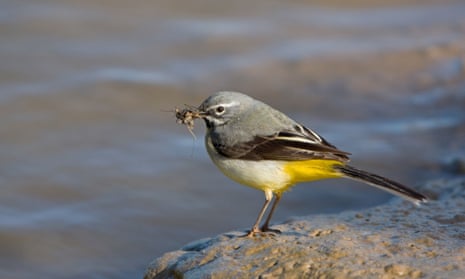My heart sinks as I hear for the umpteenth time “I’ve just seen a yellow wagtail” and I explain that, although the bird was indeed a wagtail, and did sport a flash of lemon-yellow beneath the tail, it was in fact a grey wagtail.
I reflect, not for the first time, that if there was a prize for most unsuitable British bird name, the grey wagtail would win hands down.
Most people are familiar with the pied wagtail, that charismatic little bird that picks tiny insects off pavements and lawns, and roosts in trees along our high streets, up and down the country.
Grey wagtails are not as common as their black-and-white cousins, but I do see them fairly often – usually flitting up from a drainage ditch – as I cycle around the Somerset Levels. Slender and elegant, they have a distinctively sharp, metallic, high-pitched call. Usually found by fast flowing rivers or streams in summer, in winter they can be seen almost anywhere.
The yellow wagtail is a spring and summer visitor from Africa, mostly found on wet meadows. Sadly, the species has declined in recent years, and so is far less likely to be seen than before.

Comments (…)
Sign in or create your Guardian account to join the discussion